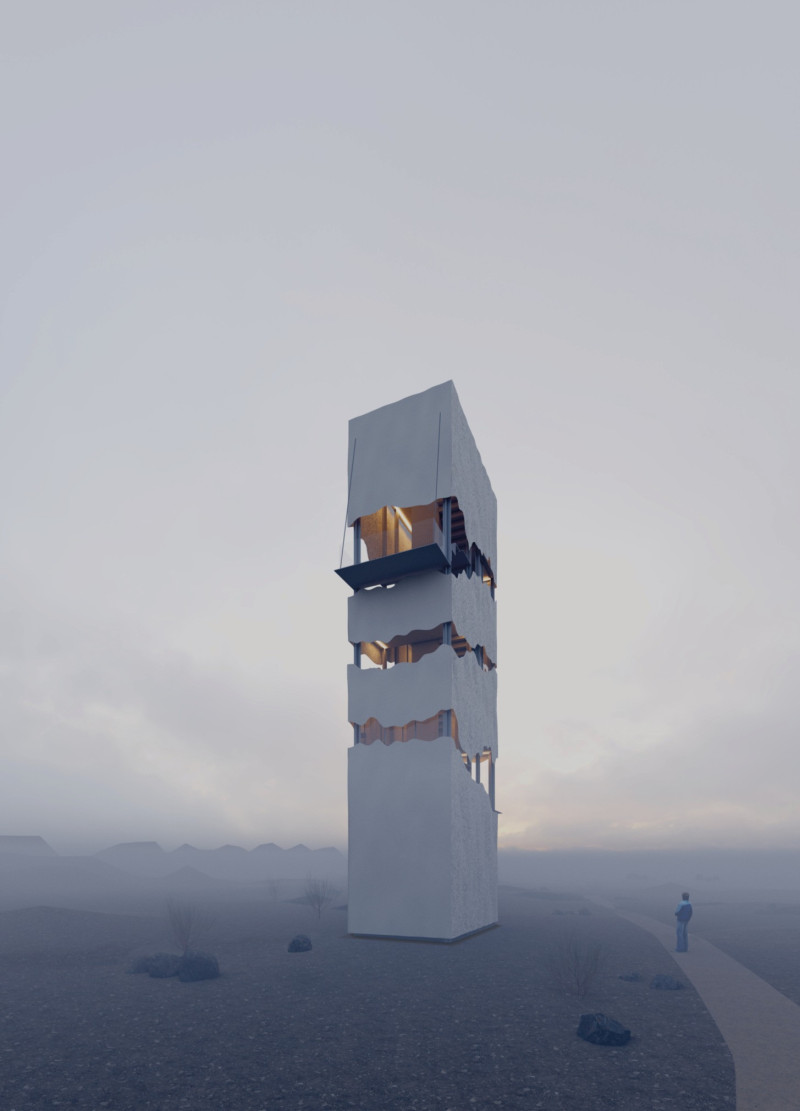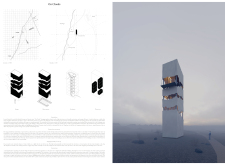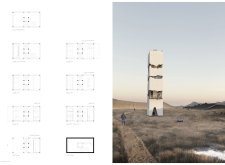5 key facts about this project
On Clouds is an architectural design located in Grjótagjá, Iceland, near the natural crack between the North American and Eurasian tectonic plates. The structure serves as a small shelter that connects human activity with the surrounding landscape. It focuses on eco-friendly construction, energy efficiency, and light, open forms. The overall design aims for verticality, enhancing the structure’s visibility while encouraging a deeper interaction with the unique geological features of the area.
Translucent Netting
The building incorporates translucent netting throughout its design. This material serves several purposes, including protection against weather conditions and the facilitation of natural light within the space. The netting brings an interesting quality to the interior, casting patterns of light and shadow that change as the day progresses. With its various cuts and openings, the netting invites exploration and offers a refreshing approach to how light plays within the structure.
Sustainable Energy Generation
A significant feature of the design is the use of piezoelectric technology. Thin straws are integrated into the facade to capture and convert movements caused by the wind into usable energy. This approach allows the facade to become more than just a visual element; it actively generates energy for the building. The result is a responsive surface that highlights the natural elements surrounding the structure.
Water Collection System
Addressing the issue of water availability, the design includes a system that collects moisture from fog, which is common in the region. The permeable net captures tiny water droplets from the atmosphere. These droplets gradually gather and drain into a collection system, providing a source of safe drinking water. This function underscores the project's commitment to sustainability and efficient resource management.
With its careful attention to design and its interaction with the environment, On Clouds offers a unique experience that blends function and nature. Each detail is thoughtfully considered, emphasizing the relationship between architecture and the landscape. The result is a space that encourages visitors to appreciate both the building itself and the dramatic surroundings it inhabits.






















































